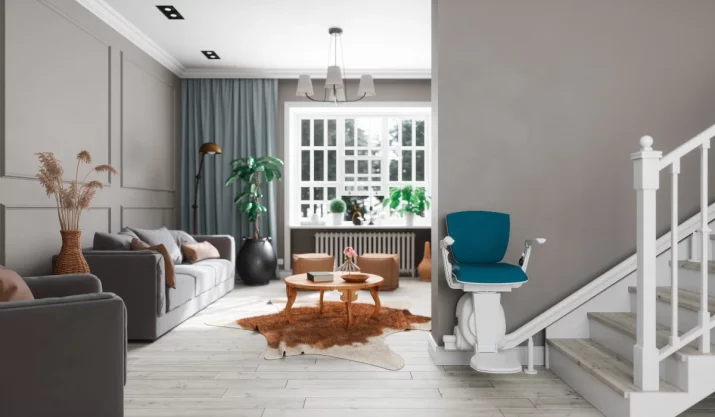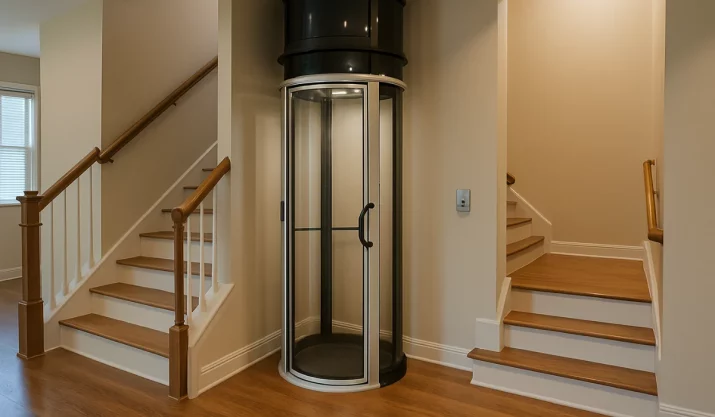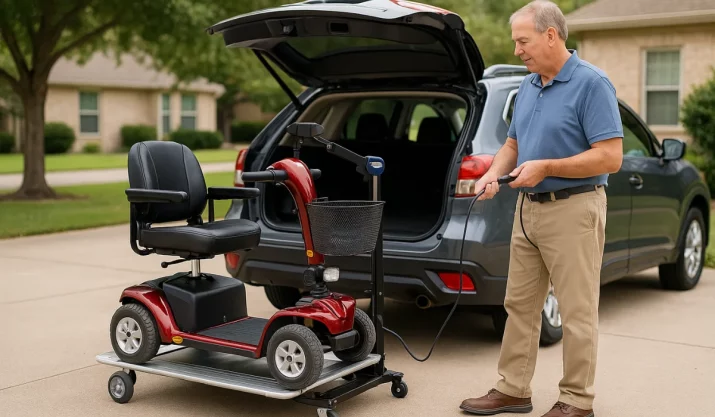Aging in Place? These Home Modifications Are Worth Considering

Table of Contents
Worried about living in your own home as you get older? No need to fret. With a few simple changes and improvements, you can ensure that you or a family member are safe and comfortable in your home for years to come.
Today, we’ll discuss home modifications that you can make to help older people age in place safely and comfortably.
Key Takeaways
- Aging in place means staying in your own home permanently, despite age-related changes.
- Home modifications can help you maintain your independence, safety, and comfort as you age in your home.
- To make aging in place more viable, you can modify nearly all areas of your home, including the bedroom, kitchen, bathroom, living room, and more.
Aging in Place: What Does It Mean & Why Does It Matter?
Aging in place is when you can (and want to) remain in your home despite age-related disability or changes in health. This is the preferred option for many people, allowing them to stay in a comfortable and familiar space. And if you’re considering aging in place, making home modifications can be a great way to do that.
Home modifications can play a big role in making your home more comfortable and accommodating as you age. Some common home modifications that can help you age in place include:
- Installing grab bars in the bathroom;
- Widening doorways and hallways;
- Adding a ramp or wheelchair lift to your home; or
- Updating your kitchen to make it more accessible.
How Can Aging in Place Benefit You?
According to the AARP, “90 percent of people aged 65 and over would prefer to stay in their own homes as they get older.” It’s no wonder older adults who remain in their homes report feeling a greater sense of control, self-esteem, purpose, and happiness than those who move out of their homes. Additionally, staying in your home can reduce feelings of loneliness and depression by providing a sense of familiarity.
When you age in place, you also don’t have to worry about the costs and other associated headaches of moving. Home modifications can also help you save money long term, as they can reduce the need for medical equipment and other costly elderly care services.
In fact, the average monthly living cost in an independent community ranges from $1,500 to $4,000, depending on the location. And those who reside in assisted living facilities have a monthly fee averaging between $3,500 and $10,500.
On the other hand, you can expect the average cost of most home modifications to range between $3,000 – $15,000. So in only one year, you’ll have saved more money by making home modifications than you would have paying the cost of assisted living.
Home Modifications for Each Room
You can make various modifications from your bedroom to your kitchen to make your home much more comfortable, accessible, and safe. Below are some ideas for each room you can consider when planning home modifications.
Bathroom
Curbless Shower
A curbless shower (a.k.a. a walk-in tub) makes the bathroom more accessible for those with limited mobility. By removing the raised edge of the shower, you can more easily get in and out of it with a walker or wheelchair. This reduces the risk of a fall or injury. And it allows for a more comfortable experience.
Seats, Stools, and Benches for Shower and Toilet
Adding seats and benches are great ways to make the bathroom more convenient and safe for aging. These can help you quickly get in and out of the bath or shower. And it can also be helpful if you’re fatigued, have balance issues, or cannot stand for long periods. You’ll find a variety of designs available, from a wall-mounted seat to a free-standing bench.
Removable Showerhead (in case one needs to sit down)
A great way to make showering more practical and safer is by installing a removable showerhead. You can install this type of showerhead on the wall, or you can use a hand-held model. With a removable showerhead, you can easily adjust the water pressure and temperature without moving around in your shower. And if you ever need to sit down, you can easily take the showerhead out of its mount and spray your body while sitting down.
Grab Bar and Rail
Grab bars and railings are essential for providing support in the bathroom. They help keep your balance when getting in and out of the shower area. And you can also use them as you maneuver around your toilet, mainly if you have mobility or balance issues. Additionally, you can install railings around your toilet to make it easier to get up and down.
Bedroom
Stairlift
A stairlift is an ideal home modification for those who struggle with climbing stairs. Installing one will help you quickly climb stairs without worrying about falling or getting injured. They work by transporting you up and down the stairs in a comfortable chair so you don’t have to worry about maneuvering them on your own.
Floor Considerations
Hardwood pros and cons
Hardwood flooring is an excellent choice for home modifications as it looks beautiful and can last for decades. It is also easy to maintain, with regular sweeping and mopping being all that’s needed to keep your floors looking their best. On the downside, wood can be slippery when wet or when wearing certain shoes, so consider rugs or carpets with non-skid backing in some areas.
Pros:
- Looks beautiful and can last for decades;
- Easy to clean with regular sweeping and mopping;
- It can be refinished to look new.
Cons:
- It can be slippery when wet or walked on with certain shoes;
- Can scratch and dent easily;
- More expensive than other types of flooring.
Carpet pros and cons
Carpets can be an excellent choice for home modifications as they are warm and comfortable, making them perfect for seniors with limited mobility or balance. They also provide a cushion for falls, reducing the risk of injury. On the downside, carpets tend to wear out quickly and can be challenging to clean and maintain.
Pros:
- Warm and comfortable;
- Provide a cushion for falls, reducing the risk of injury;
- It can help reduce noise.
Cons:
- Tend to wear out quickly;
- Difficult to clean and maintain;
- Can trap dust and allergens.
Bed Enhancements
A bed upgrade is another excellent way to modify your home and make it more comfy and livable for seniors. You can invest in bed rails as well as bumper pads to keep you safe when sleeping, which will prevent you from rolling off the bed. Also, consider an adjustable bed or mattress protector if you have issues getting in and out of the bed itself.
Home Entryway
Steps – Ramps and Stairlifts
If you have difficulty getting into your home, consider installing a ramp or stairlift to make things easier. A ramp is ideal for those who use a wheelchair and those with limited mobility in general. They provide a safe and easy way to access the home without the need to climb stairs. Stairlifts are another excellent option for those who have difficulty going up and down stairs. Consider these options if the doorway of your home is difficult to access.
Handrails
Another great way to modify your home is to install handrails or grab bars around the house. Handrails can provide more stable footing for those who may be unsteady. They can also help you keep your balance when transitioning from one area to another, such as going up or down stairs. Be sure to install them at a comfortable height and angle that makes it easy for you to use them.
Security
Security is an essential aspect of home modifications as well. Consider adding door and window alarms, lighting systems, or a security system to your home. Knowing that your home is protected and monitored can help give you peace of mind. Additionally, it can deter burglars or intruders from entering your home. Security measures are especially beneficial for seniors with difficulty hearing or seeing any potential danger.
Kitchen
Flooring – non-slip tile
The kitchen is another vital home area you can modify for safety and accessibility. Non-slip tile is an excellent option for flooring in the kitchen, as it is easy to clean and maintain. It also provides a secure grip for those who are unsteady on their feet, making it safer to get around the kitchen.
Easy-to-reach Cabinets
You’ll also want to ensure that all cabinets and shelves in your kitchen are easy to reach. This can help reduce the need for stretching and reaching for items, which can be difficult if you have limited mobility. Also, consider installing a pullout shelf or a lazy susan to make it easier for you to access items stored in the back of your cabinets.
Countertops
The first thing to ensure is the counters are low enough for you to reach comfortably. Multilevel counters are a great solution, allowing you to choose the most suitable height. In addition, color-coded edges provide visual signals that alert you to sharp edges and make them easier to avoid, so consider these as well. Finally, you can add an emergency grab handle on the edge of the countertop, just in case it is needed.
Oven/Stovetops
Safety should be your number one priority for ovens and stoves. Make sure they are mounted within easy reach, with a bright and large console that is illuminated so you can easily read the settings. To reduce accidents, consider installing a pull-out counter directly underneath the oven. If you have limited mobility, having a cooktop instead of a standard range is also securer.
For extra safety, you should look for cooktops with color indicators that showcase whether the burners are on or still hot after the cooktop has been shut down. Finally, self-cleaning cooktops are another great option to reduce your overall workload.
Smoke Alarms/Fire Extinguisher
Lastly, it is essential to prioritize safety in the kitchen. Make sure there are multiple smoke detectors and carbon monoxide detectors throughout the house, with one in the kitchen. Additionally, keep an up-to-date fire extinguisher in the kitchen to be easily accessible.
Can I Get Financial Assistance for Home Modifications?
Unfortunately, programs like Medicare don’t generally cover home modifications. Since home modifications don’t directly improve medical conditions and only focus on increasing ease and convenience, they don’t meet Medicare’s financing criteria.
However, there are places you can go to for help with financing the repairs. These include the following:
- Rebuilding Together, Inc. is a national volunteer organization with local affiliates that might be able to help.
- Grant funds are available through local community development departments in various cities and towns. Search your local government’s website to see what funds they offer.
Find more resources in your state by visiting Home Mods.








